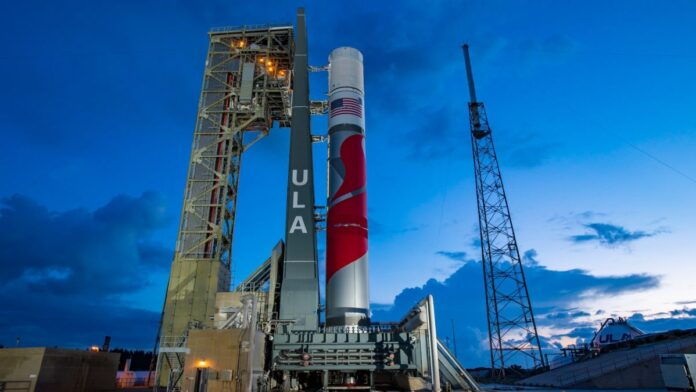The road to liftoff for United Launch Alliance’s (ULA) new Vulcan Centaur rocket just got a little longer.
The first Vulcan Centaur aced a crucial engine firing earlier this month at Cape Canaveral Space Force Station in Florida, taking a big step toward its debut launch.
But the vehicle will now take a step back: ULA plans to destack the rocket and ship the upper stage back to its factory in Decatur, Alabama, company representatives said in an emailed update on Saturday (June 24).
Related: Vulcan Centaur rocket: The space workhorse of tomorrow
The move stems from ULA’s investigation into an incident that occurred on March 29, when a Centaur exploded on a test stand at NASA’s Marshall Space Flight Center in Alabama after experiencing a hydrogen leak.
The company has now determined the root cause of the anomaly as well as the required corrective action, which explains the destacking plan.
“Centaur’s thin-walled pressure stabilized tanks require minor reinforcement at the top of the forward dome prior to flight,” ULA representatives wrote in the June 24 update.
“The booster is healthy and ready to support the first launch and will be stored horizontally in the Horizontal Integration Facility [at Cape Canaveral] until we are ready to resume mission processing,” they added, referring to the rocket’s first stage.
Vulcan Centaur’s debut flight will send the private Peregrine lander toward the moon. Also getting a lift are two test satellites for Amazon’s Project Kuiper internet megaconstellation and a payload for Celestis, a company that specializes in space memorial services.
Before the March 29 anomaly, ULA had been targeting early May for the launch. There’s no new timeline for the mission yet, though we could get one soon.
“ULA has several Centaur V flight articles in production in Decatur, and one will be identified as the test article to complete qualification testing,” ULA said in the June 24 email. “Tory Bruno, ULA president and CEO, will provide an update at a media telecon in the next few weeks.”
ULA has big plans for Vulcan Centaur: The 202-foot-tall (62 meters) rocket will replace the company’s workhorse Atlas V and its powerful Delta IV Heavy.

